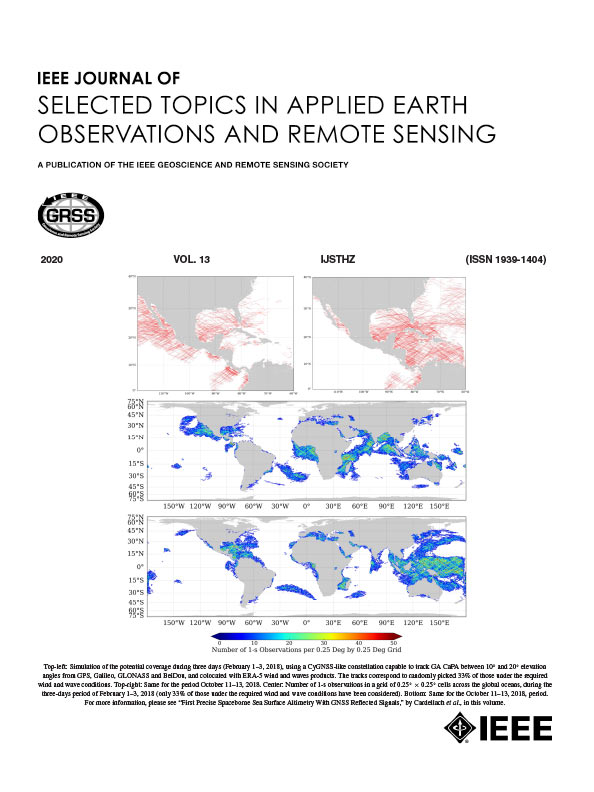Coastal Wetlands Classification and Carbon Storage Estimation: A Case Study of the Region Surrounding the South China Sea
IF 4.7
2区 地球科学
Q1 ENGINEERING, ELECTRICAL & ELECTRONIC
IEEE Journal of Selected Topics in Applied Earth Observations and Remote Sensing
Pub Date : 2025-03-11
DOI:10.1109/JSTARS.2025.3549480
引用次数: 0
Abstract
Coastal wetlands are typical carbon sinks and play a crucial role in achieving global carbon neutrality goals. The region surrounding the South China Sea (SCS) contains abundant coastal wetland resources and strong carbon sequestration capabilities, which can be effectively assessed by the well-known integrated valuation of ecosystem services and tradeoffs (InVEST) model. InVEST requires accurate spatial distribution information of wetlands as input data, which can be obtained by coastal wetlands classification methods. Among all classification methods, deep learning (DL) is the state-of-the-art. However, designing a DL method that is both easily trainable and suitable for large-scale coastal wetland classification remains a challenging issue. This article proposes a novel DL method and a new carbon correction strategy for large-scale coastal wetland classification and carbon storage assessment. First, the remote sensing (RS) data from the study area is acquired and preprocessed by the Google Earth Engine. Second, the Otsu algorithm and decision tree are used to extract the maximum wetland extent. Third, a multidirectional squeeze attention network (MDSAN) is proposed for large-scale coastal wetland classification. Finally, a new strategy is designed to correct measured carbon pool data using meteorological data. Experiments show that the proposed wetland classification method achieves an overall accuracy and Kappa coefficient of 0.9500 and 0.9411, respectively, demonstrating the effectiveness of MDSAN. Furthermore, the estimated carbon storage in the mangroves, tidal-flats, and swamps surrounding the SCS is approximately 1.2112滨海湿地分类与碳储量估算——以南海周边地区为例
滨海湿地是典型的碳汇,在实现全球碳中和目标中发挥着至关重要的作用。南海周边地区拥有丰富的滨海湿地资源和较强的固碳能力,可通过生态系统服务与权衡综合评价(InVEST)模型对其进行有效评价。InVEST需要准确的湿地空间分布信息作为输入数据,可通过滨海湿地分类方法获得。在所有分类方法中,深度学习(DL)是最先进的。然而,设计一种既易于训练又适合大规模滨海湿地分类的深度学习方法仍然是一个具有挑战性的问题。本文提出了一种滨海湿地大尺度分类与碳储量评估的DL方法和碳校正策略。首先,利用谷歌地球引擎对研究区遥感数据进行预处理。其次,利用Otsu算法和决策树提取最大湿地面积;第三,提出了用于大尺度滨海湿地分类的多向挤压关注网络(MDSAN)。最后,设计了一种利用气象数据对实测碳库数据进行校正的新策略。实验表明,本文提出的湿地分类方法总体精度为0.9500,Kappa系数为0.9411,证明了MDSAN方法的有效性。红树林、潮滩和沼泽的碳储量分别约为1.2112$\boldsymbol{\times}10\boldsymbol{^{9}}$ t、6.9138$\boldsymbol{\times}10\boldsymbol{^{7}}$ t和1.6980$\boldsymbol{\times}10\boldsymbol{^{8}}$ t,揭示了该区域的碳分布格局。
本文章由计算机程序翻译,如有差异,请以英文原文为准。
求助全文
约1分钟内获得全文
求助全文
来源期刊
CiteScore
9.30
自引率
10.90%
发文量
563
审稿时长
4.7 months
期刊介绍:
The IEEE Journal of Selected Topics in Applied Earth Observations and Remote Sensing addresses the growing field of applications in Earth observations and remote sensing, and also provides a venue for the rapidly expanding special issues that are being sponsored by the IEEE Geosciences and Remote Sensing Society. The journal draws upon the experience of the highly successful “IEEE Transactions on Geoscience and Remote Sensing” and provide a complementary medium for the wide range of topics in applied earth observations. The ‘Applications’ areas encompasses the societal benefit areas of the Global Earth Observations Systems of Systems (GEOSS) program. Through deliberations over two years, ministers from 50 countries agreed to identify nine areas where Earth observation could positively impact the quality of life and health of their respective countries. Some of these are areas not traditionally addressed in the IEEE context. These include biodiversity, health and climate. Yet it is the skill sets of IEEE members, in areas such as observations, communications, computers, signal processing, standards and ocean engineering, that form the technical underpinnings of GEOSS. Thus, the Journal attracts a broad range of interests that serves both present members in new ways and expands the IEEE visibility into new areas.

 求助内容:
求助内容: 应助结果提醒方式:
应助结果提醒方式:


